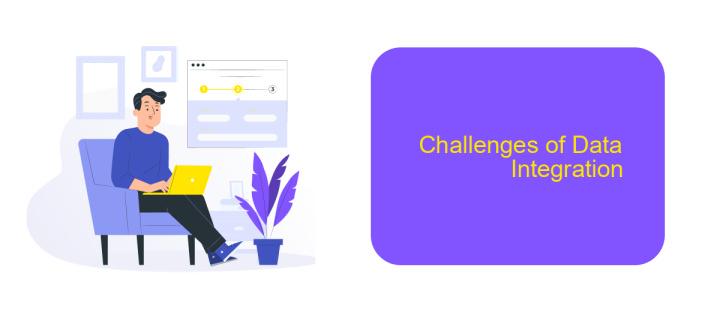Data Integration Tools
In today's data-driven world, businesses rely heavily on data integration tools to streamline their operations and make informed decisions. These tools enable the seamless merging of data from various sources, ensuring consistency, accuracy, and accessibility. By leveraging data integration solutions, organizations can enhance productivity, improve data quality, and gain valuable insights, ultimately driving better business outcomes.
Introduction
Data integration tools are essential for modern businesses aiming to streamline their operations and improve data accessibility. These tools enable seamless data flow between various systems, ensuring that information is consistent and up-to-date across all platforms. By automating data integration processes, organizations can save time, reduce errors, and make more informed decisions.
- Automated data synchronization
- Enhanced data accuracy
- Improved decision-making processes
- Time and cost efficiency
One notable example of a data integration tool is ApiX-Drive. This service allows users to set up integrations between different applications without requiring any coding skills. By leveraging ApiX-Drive, businesses can automate data transfers, reduce manual workload, and ensure that their systems are always in sync. As a result, companies can focus on their core activities while enjoying the benefits of streamlined data management.
Types of Data Integration Tools

Data integration tools come in various forms, each tailored to meet specific needs and challenges. One common type is ETL (Extract, Transform, Load) tools, which are designed to extract data from different sources, transform it into a usable format, and load it into a target system. These tools are essential for organizations looking to consolidate data from multiple databases, applications, and other sources into a single, unified view. Popular ETL tools include Talend, Informatica, and Apache Nifi.
Another category is iPaaS (Integration Platform as a Service) tools, which offer cloud-based solutions for integrating applications and data. These tools are particularly useful for businesses that need to connect various cloud services and on-premises systems quickly and efficiently. ApiX-Drive is an example of an iPaaS tool that simplifies the process of setting up integrations without requiring extensive coding knowledge. It allows users to automate workflows and synchronize data across multiple platforms, making it an invaluable asset for modern businesses. Other notable iPaaS tools include Dell Boomi and MuleSoft.
Benefits of Using Data Integration Tools

Data integration tools offer numerous advantages for businesses looking to streamline their operations and enhance data management. By consolidating data from various sources into a single, coherent view, these tools enable more informed decision-making and improve overall efficiency.
- Improved Data Quality: Data integration tools help in cleansing and standardizing data, ensuring consistency and accuracy across all datasets.
- Enhanced Productivity: Automated data integration processes reduce the need for manual data entry, freeing up valuable time for employees to focus on more strategic tasks.
- Real-time Data Access: With tools like ApiX-Drive, businesses can set up real-time data transfers, ensuring that decision-makers have access to the most current information.
- Cost Efficiency: By automating data integration, companies can reduce the costs associated with manual data handling and potential errors.
- Scalability: These tools can easily scale with the growth of the business, accommodating increasing data volumes and complexity.
Utilizing data integration tools like ApiX-Drive not only simplifies the process of connecting various systems but also ensures that data flows seamlessly between them. This results in a more agile and responsive business environment, capable of adapting to changing market conditions and customer needs.
Challenges of Data Integration

Data integration is a complex process that involves combining data from different sources to provide a unified view. One of the primary challenges is ensuring data quality and consistency, as data from various sources may have different formats, structures, and levels of accuracy. This can lead to discrepancies and errors that complicate the integration process.
Another significant challenge is dealing with the sheer volume of data. As organizations grow, the amount of data they generate increases exponentially, making it difficult to manage and integrate effectively. Additionally, real-time data integration requires robust infrastructure and sophisticated tools to handle continuous data streams.
- Data quality and consistency issues
- Handling large volumes of data
- Real-time data integration
- Security and compliance concerns
- Integration of legacy systems
Services like ApiX-Drive can simplify the data integration process by providing automated solutions that connect various applications and data sources. ApiX-Drive offers a user-friendly interface and a wide range of pre-built connectors, making it easier to manage data flows and ensure seamless integration. This helps organizations overcome integration challenges and focus on deriving insights from their data.
Best Practices for Data Integration
Effective data integration requires a strategic approach to ensure seamless data flow and consistency across systems. One best practice is to establish clear data governance policies. This includes defining data ownership, data quality standards, and access controls. Regular audits and monitoring are essential to maintain data integrity and compliance. Additionally, leveraging automated tools can significantly reduce manual errors and improve efficiency. For example, ApiX-Drive offers a versatile platform that simplifies the integration process by automating data transfers between various applications and services, ensuring real-time synchronization and reducing the risk of data discrepancies.
Another critical practice is to prioritize data security throughout the integration process. Implementing robust encryption methods and secure authentication protocols can protect sensitive information from unauthorized access. It's also important to ensure that all integrated systems are compatible and can communicate effectively. Conducting thorough testing before full-scale implementation can help identify and resolve potential issues early. Lastly, maintaining comprehensive documentation of the integration setup, including workflows and configurations, can facilitate easier troubleshooting and future upgrades.
FAQ
What are Data Integration Tools?
How do Data Integration Tools work?
What are the benefits of using Data Integration Tools?
Can Data Integration Tools handle real-time data?
How easy is it to set up Data Integration Tools?
Time is the most valuable resource in today's business realities. By eliminating the routine from work processes, you will get more opportunities to implement the most daring plans and ideas. Choose – you can continue to waste time, money and nerves on inefficient solutions, or you can use ApiX-Drive, automating work processes and achieving results with minimal investment of money, effort and human resources.

